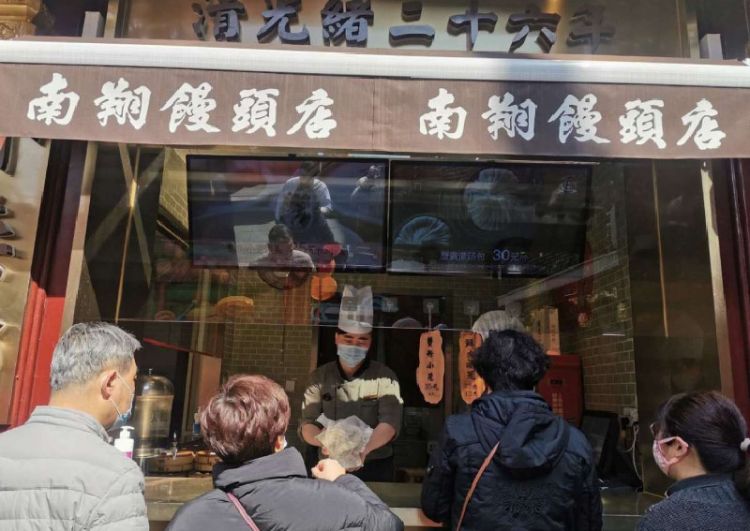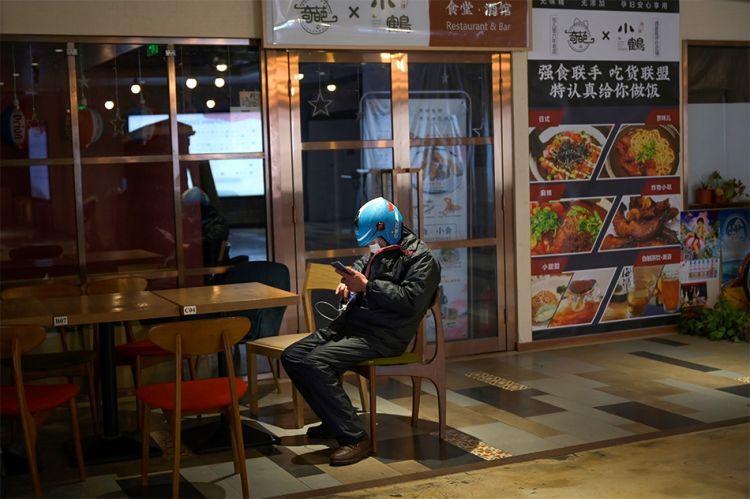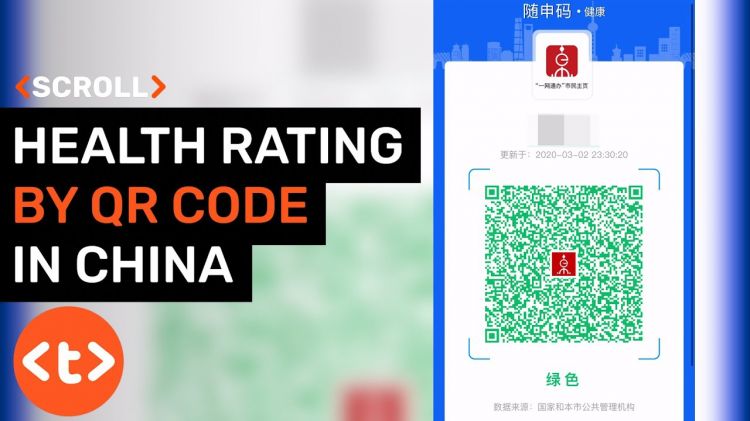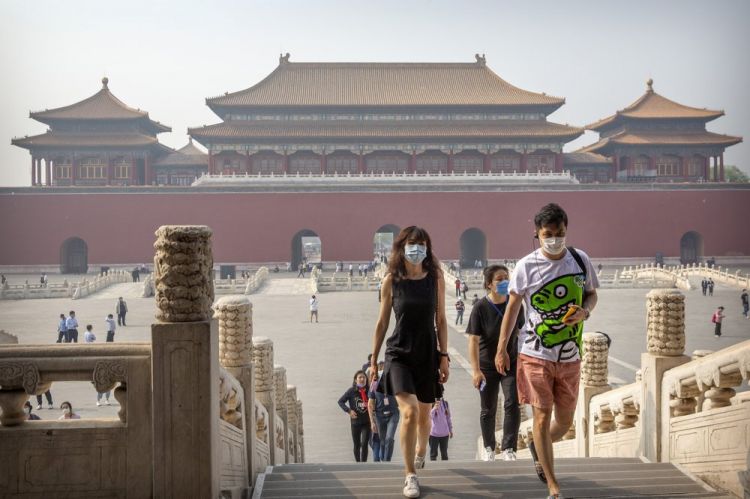We’re here to break a myth. That of the Chinese model being a crystal-clear system to face the post-coronavirus phase. While in Italy we’ve moved from phase 1 to 2 – or in the words of Totò, phase 1 and a half – and while a town by the coast reclaims the right to go to the sea, a bigot region the right to go to mass, a rebel province insults the government just for fun, while all these quarrels take place regularly, almost everyone agrees by pointing that China has recovered with the remarkable strength of a leader.
Now, let’s start by saying that the Chinese have been simply e x c e l l e n t in following regulations, always wearing masks, some even a Chernobyl-stylerescuers’ uniform, others with large plexiglass glasses, or with deep-sea suits. Now having said that each single Chinese replied in a super way, this was also associated with a dance of rulings, requests, laws and changes of behaviour that required a skilled acrobat.
Firstly, the country is a complex administrative system of 22 provinces (not counting Taiwan, which is not administrated, and the mantra of “a country with two systems” which harmonises mainland and Hong Kong/Macao), 4 municipalities, 5 autonomous regions and 2 special administrative regions. This means that a strong centralised diktat is always followed by a cascade of local implementations and super-local regulations that leave open space for interpretation. Without being so ambitious as to discuss the big issues of the world, we’ve noticed this well in the daily banalities of restaurant dining.
The funniest case was that of Samuele Rossi , general manager at Bellavita who has a restaurant and a bar in the north, close to Beijing, and another one in the centre, in Shanghai, and another cluster in the south, in Canton. «In the one in Beijing, to this day I cannot do anything outside: the dehors is closed, all the activities with the cart selling ice cream, drinks and pancakes have stopped. This because local authorities are afraid that when people bring food outside they are forced to lift their mask, and can potentially infect other people. In Shanghai instead I have no limitation, indoor and outdoor is the same. In the south on the other hand I’m recommended to keep social distancing indoors, and can sell outside». This is perhaps because a group of Chinese researchers have conducted a study in a restaurant in Canton (in the South) where an asymptomatic (who later turned out to be positive) from Wuhan and who sat in front of the air conditioning split infected 9 people sitting at the tables around him, saving all the other tables in the other half of the restaurant because they weren’t reached by the air conditioning.

Street food from NanxiangMantou in Shanghai, the specialty is stewed meat bun (photo credits China Daily/Asia News Network)

Beijing (photo credits Tingshu Wang, Reuters)
Speaking of distancing... even here it looks like it’s pure magic realism: at
Niko Romito’s
Ristorante, in the north, clients – even when husband and wife -, sit usually next to one another at a 90° corner (to avoid spreading breath and droplets face to face), tables have been set at least 1.5 metres apart, everyone wears gloves, masks, everything is sanitised every hour. At
DaVittorio in Shanghai instead «for a few days now we don’t even have to measure the temperature when people arrive».
Speaking of gloves... «You must wear them with the masks», however
Bacchelli continues, «in the kitchen people don’t use gloves. They use them only in the dining room». In the dining room, where there’s social distancing, they’re required; in the kitchen where hands and faces are so close to each other that herd immunity rockets, they’re not. (Please note: we agree with Bacchelli, the majority of chefs agrees that in the kitchen they must use no gloves, but wash their hands frequently. Gloves indeed do not allow to feel the product as well, and in any case they should be changed constantly, because in the kitchen you’re always touching different substances... meat, fish, eggs, vegetables, boiling ingredients and cold ingredients, different textures and so on).
And then, as for Chinese cuisine, tables in Zhong Guo restaurants are large (they usually seat 10 people) and round by definition, hence they perfectly fit with the 90° rule (to avoid breathing) and distancing. But Chinese restaurants are also the kind where sharing plates in the middle of the table is typical, with the classic circling disc, where everyone picks the food with their chopsticks, after having left lots of saliva on them (in some restaurants there are service chopsticks, to be used only to move the food from the plates in the centre of the table to your bowl, but this is very rare). Lots of safety and lots of question marks.
All this is complicated by other variables: whether the restaurant is a stand-alone (like
Ottoemezzo Bombana or
DaVittorio); whether it’s inside a hotel (like
Niko Romito at Bulgari or
Mio at
Four Season); or it’s inside a shopping centre (like
Ottoemezzo Bombana in Beijing) or - in other more unique cases – if it’s inside a residential compound (like the famous
Maya in Shanghai) or inside an outlet village (as in the case of the above mentioned
BellaVita). Every location has its small laws, habits, its security guard who applies rules in a very personal way and, like the bodyguard in a nightclub, will allow entrance to those he likes. Just think that during the quarantine, the security of residential buildings – if they felt unsafe for some reason (for instance if the person in front of them came for Italy, to give a classic example) – they could send a family to a collective centre even if the family had only green stamps on the passport, the healthy code was ok, and they had quarantined in another healthy country.
But now that phase is over. Now in China all the foreigners who have arrived are in (they have all completed the quarantine). All those who are out, are out (with a governmental ruling from late March). And those who made food for foreigners, did travel business and catered for non-locals have to put their mind at peace.

The health code on Chinese mobile phones

First of May, the reopening of the Forbidden City in Beijing, closed for over three months
Speaking of health code... even in this case for around one month it was like rolling the dice when playing Risk. Every person whether Chinese or foreigner had (and still has) an app on their smartphone that tells if their pedigree in that city is healthy or not. The issue is that you – once you had the green code in Shanghai – could dine in all the restaurants in Shanghai. So far so good. But then you didn’t know what colour your code would become if you left the city. Every two or three days a cahiers de doléances was published, city by city, province by province through which you knew (guessed) that if from Shanghai you wanted to go to Hangzhou or Chengdu, just to give a random example, you would have to do two weeks of quarantine for the first destination, zero quarantine for the second, but then you would have to go on quarantine once back in Shanghai. And so forth, in hundreds of variations for every city, based on the seriousness of the pandemics at that moment in each place.
The result: to be on the safe side, for months very few people travelled. And in the case of foreigners, they’d be stuck at home like during an siege since you were already to have problems from the start to get into the train station of departure (not to mention the airport).
Now all this puzzle is disappearing day by day, with the much awaited reopening on the first of May of the Forbidden City (closed for over 3 months, on January 28th). We’re still on limited mode given that instead of the usual 80K visitors per day (30 million people each year) the government is only allowing 5K and only upon reservation. All this so that the movements of the masses can be controlled respecting the God of Distancing.
And who cares if on the same day, May 1st, on Tai Shan, the mountain of Shandong sacred to the Buddhists, 30K people were crammed there to go and watch dawn as a good omen.
Translated into English by Slawka G. Scarso